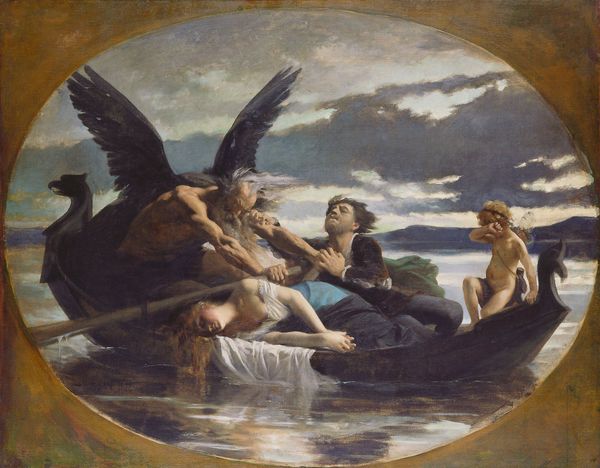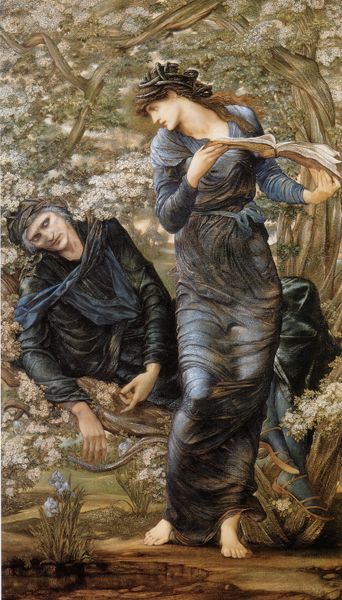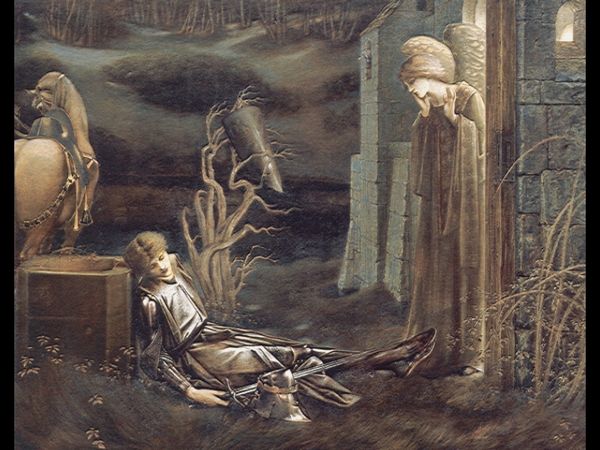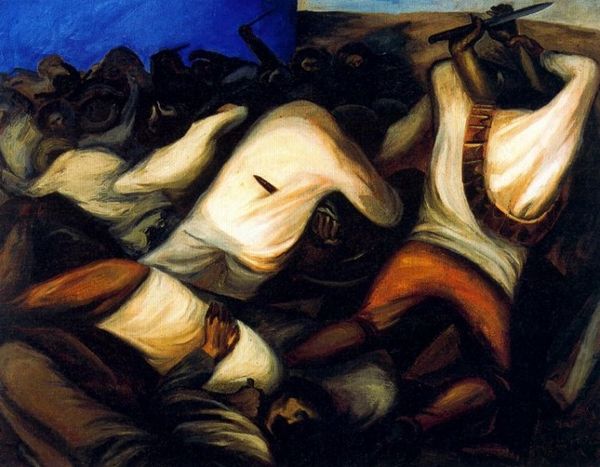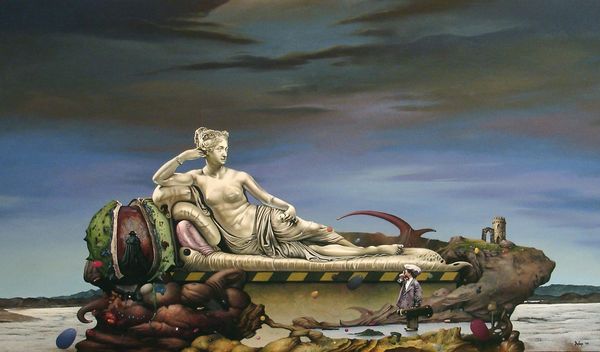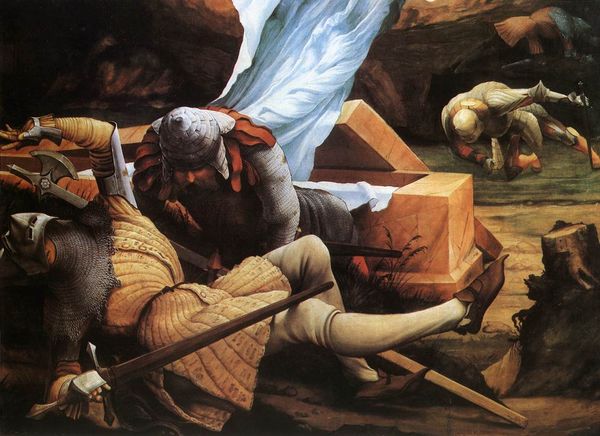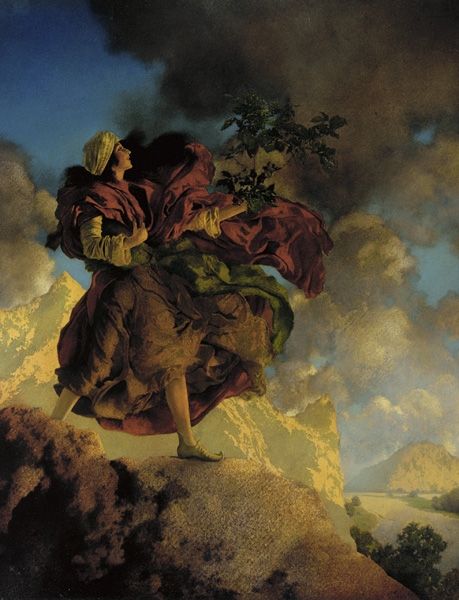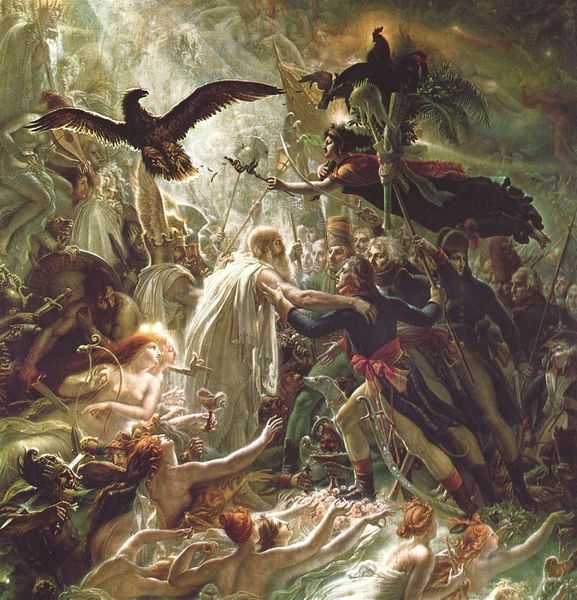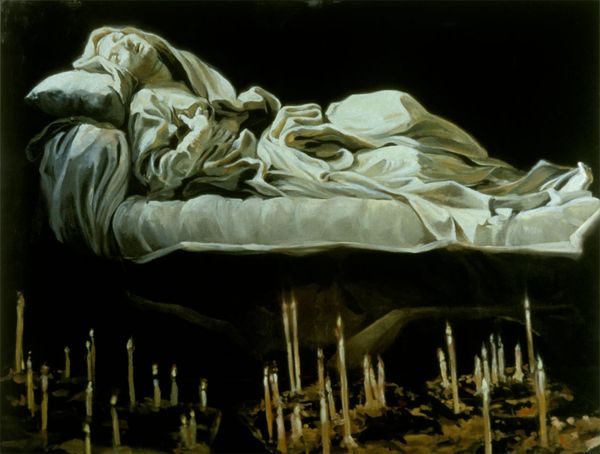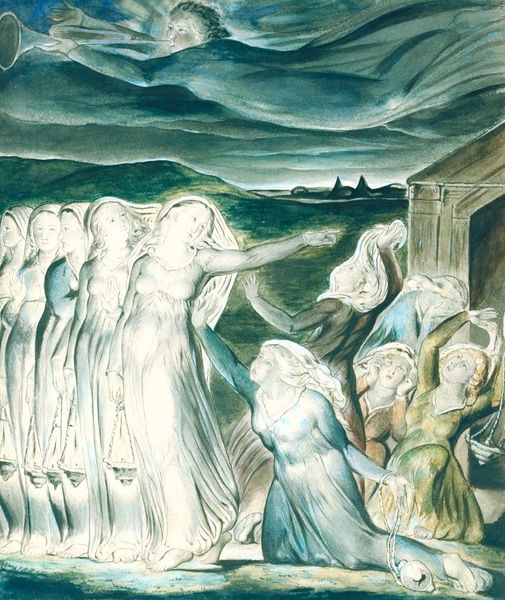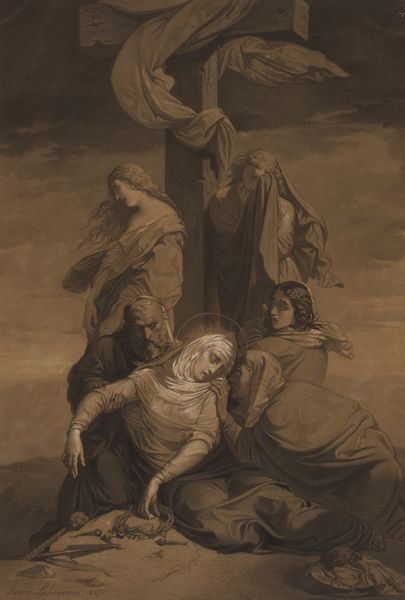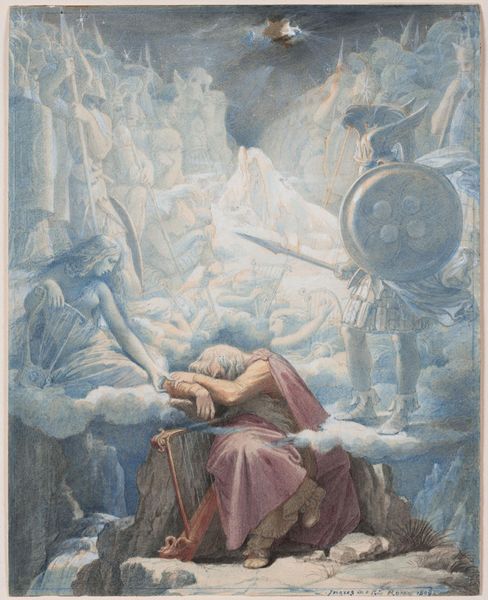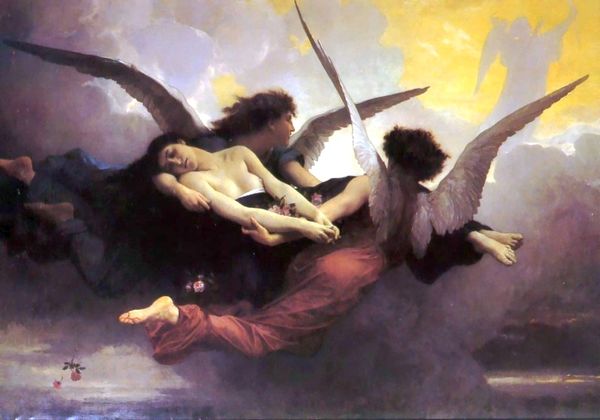
Perseus And The Graiae 1877
0:00
0:00
siredwardcoleyburnejones
National Museum Cardiff, Cardiff, UK, Staatsgalerie Stuttgart, Stuttgart, Germany
painting, oil-paint
#
fantasy art
#
painting
#
oil-paint
#
fantasy-art
#
oil painting
#
mythology
#
symbolism
#
history-painting
#
pre-raphaelites
Copyright: Public domain
Editor: Here we have Edward Burne-Jones's oil painting, "Perseus and the Graiae," from 1877. There’s something very still and unsettling about the figures and the almost lunar landscape. What do you make of this piece? Curator: Burne-Jones uses a mythological narrative, but it is the anxieties of the late 19th century that I see reflected. Note the shared eye and tooth of the Graiae—three sisters forced to share. How might their disability relate to Victorian society’s treatment of the differently abled? Is Burne-Jones critiquing societal expectations of perfection and able-bodiedness? Editor: That's a very interesting connection. I was thinking more about the male gaze; the scene almost feels voyeuristic. Perseus, fully armed, is watching them in their vulnerability. Curator: Exactly! And how does Perseus obtain information? Through coercion. He manipulates their shared vulnerability for his own gain. How might this scene be speaking to Victorian imperialism, where the vulnerability of colonized people was exploited? The Pre-Raphaelites were fascinated with the past, yet the social commentary seems pointedly contemporary. What do you think about the muted palette used here? Editor: The greyish hues add to the feeling of oppression, almost as if the scene takes place in a prison, enhancing the sense of powerlessness. Curator: Precisely! Color theory reinforces the narrative's oppressive elements, pushing us to reconsider aesthetic pleasure and examine our roles and relationships within power dynamics. Do you find that it changes the reading of this scene for you? Editor: Absolutely. Thinking about those broader cultural critiques adds depth and complexity. It makes you consider what isn't being said directly in the artwork. Curator: Right. Art isn't made in a vacuum; its interpretation demands contextualization.
Comments
No comments
Be the first to comment and join the conversation on the ultimate creative platform.
